
CNN ranked Singaporeans as the 2nd coolest nationality. Maybe because are the only Asians whose English is their first language, thus can easily chat up with foreign travelers and CNN reporters about how cool Singaporeans are.
Given my traveling preference, I should find ‘unauthentic’ Singapore utterly boring with its super clean, over polish images and ubiquitous ads claiming to the best, the only, the largest, the first in every category. Strangely though I grew to like this “snobbish” little child-turn-giant. Singapore didn’t look nor behaved like my view of an Asian country and Asian people.
For the first time after three months traveling through Russia, Mongolia and China (read the whole travel series in the “Long Way Home“), I stopped worrying about my belongings being stolen. I stopped looking down on my steps to avoid spit, garbage, and muds. I leaned freely against public walls and sat down on public grounds without worrying about catching germs.
After a few days, I found Singapore and Singaporeans a little refreshing despite their constant warnings to slap fines on me if I didn’t do this or that.
Food is a must for any kind of travel to Asia. Asians love food, and their cuisines are world-class. Ok, I’m a bit biased here. Industrialized and rich Singapore is no exception. No matter how modern this country claims to be, it still has the same low-key, messy, food-everywhere dining scene I saw in China, Hong Kong, and Taiwan. (Thank God!) The only difference in Singapore is you eat in food courts scattering around every metro station instead of street food stalls and small eateries. Other things can be pricey in Singapore, but the food is still cheap and delicious. You have to eat, and so had I.
I thought that I had already eaten enough in China and Hong Kong and could lay off Chinese food, but I ate even more in Singapore. Singaporean meals tend to be lighter and simpler than typical Chinese meals, perhaps due to the fast-paced industrial lifestyle here. Also, Singaporean cuisine is a mixture of Chinese, Malay and Indian, thus has very different flavors. I ate so much because the food was so good, and I felt hungry more often due to the smaller portions.
Believe it or not, food is one of the reasons Singapore claims you should visit the country.
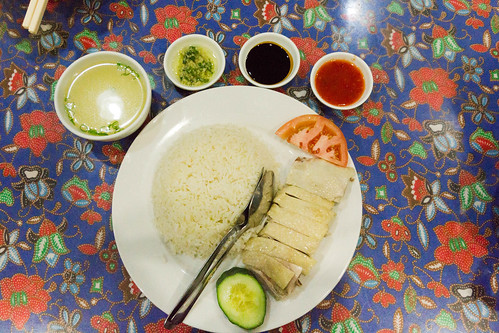
Hainanese Chicken (very light, simple, but surprisingly good.)
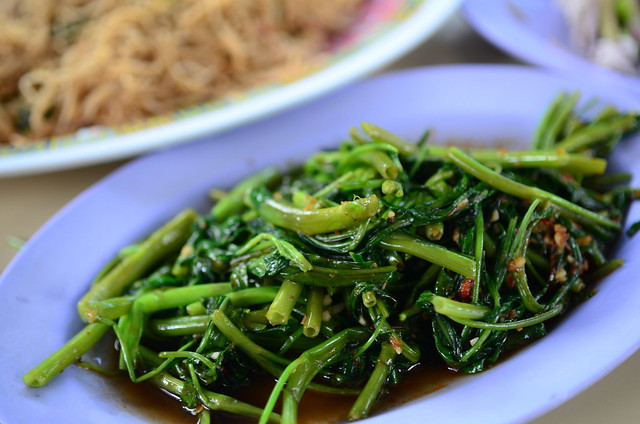
Fried noodle and steam vegetable
Catch Southeast Asia’s largest light and water show at Marina Bay. It’s on every evening and FREE.
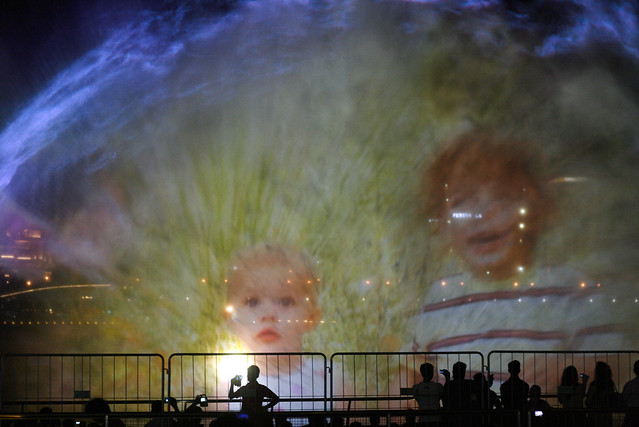
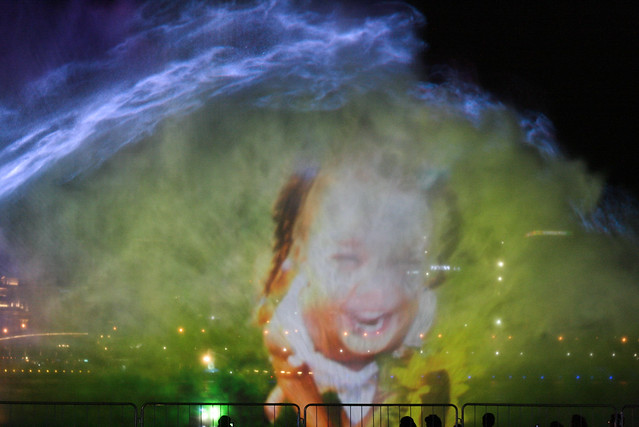
Singapore has lots of high rises, apartment blocks, office buildings and mega malls. To bring some sense of life to this otherwise soulless appearance, the government embarked on building another softer, fresher side by planting a lot of trees and flowers, thus earning the nickname Garden City.
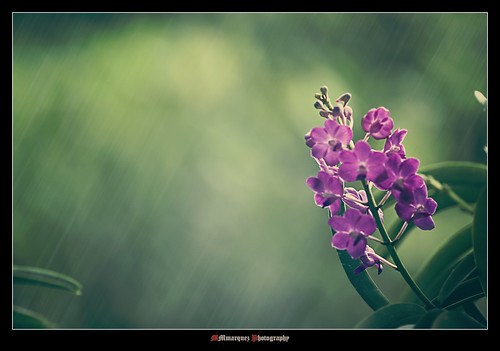
Visit this colorful neighborhood with lots of shops selling “Indian” souvenirs, clothing and food. Little India is the only place in Singapore where you will find a sense of Asian normalcy: messy and loud.
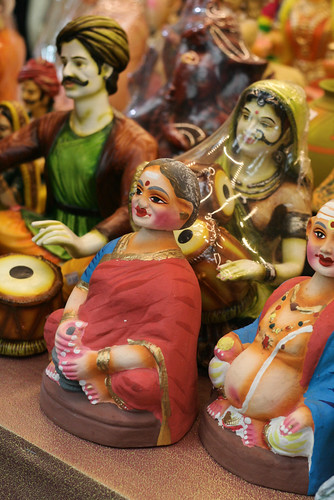
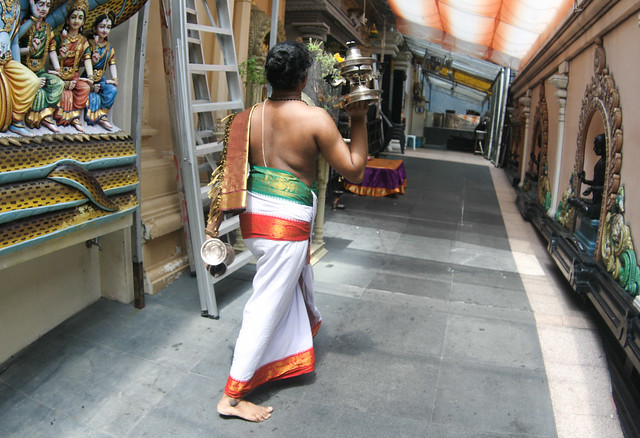
Geylang is another ethnic neighborhood, inhabited by mainly ethnic Malays. Geylang is said to be Singapore’s red-light district. I stayed here during my first few days in the country before moving on to another neighborhood.
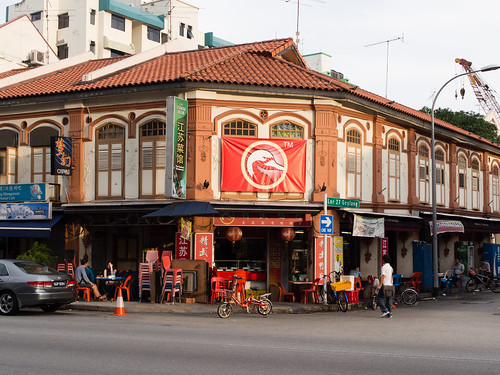
Since the Indians have Little India and the Malays have Geylang, the Chinese, too, have a little something which they call- surprise – Chinatown. It makes perfect sense for every group to have their own signature neighborhood until you find out that ethnic Chinese makes up around 75% of the population. I guess this is where one goes to look for the “real” Chinese and less of the Singaporean Chinese.
Everywhere you go, even in a developed country, Chinatown is a bit dirty and messy. Heaven forbids, it’s not here in Singapore where the Chinese are the one who establish order and rule in the country. Chinatown is ridiculously clean and organized. Little India is more like your version of Chinatown than the real Chinatown.
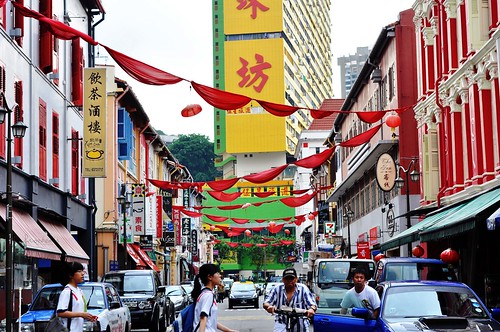
There is a long stretch of free beaches where local Singaporean go to rela during the weekend. I found out about this place when my host family drove me to the park to pick up a family member who participated in a marathon. Seeing how quiet and relaxing this area was, I asked them for the direction to come here later on my own. Yup, I chose the weekend of all days. The park was full of people doing picnic, rollerblading, bicycling and even camping.
You want to know how hot it is in Singapore? Look at the tents that people pitched tents at the park? Do you see it in parks in your country?
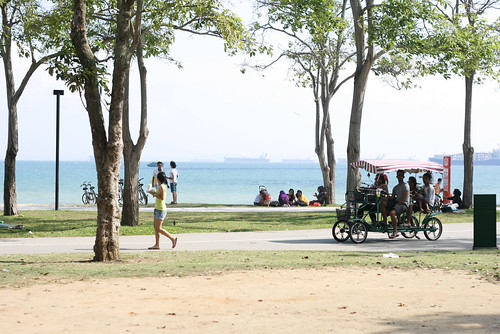
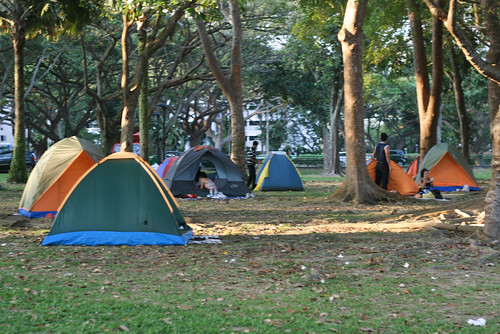
Singapore’s ultimate entertainment center boasts a Universal Studio, beach resorts, golf courts, five-star hotels. I took the free shuttle bus and train to get around the island, sampling many ‘imported sandy’ beaches. It was too hot, sunny and a little superficial to enjoy the beach there.
Overall, Sentosa was nice, and I enjoyed my walk around the island. There is no entrance fee to enter the island. If you don’t go on any rides, you don’t waste money here.

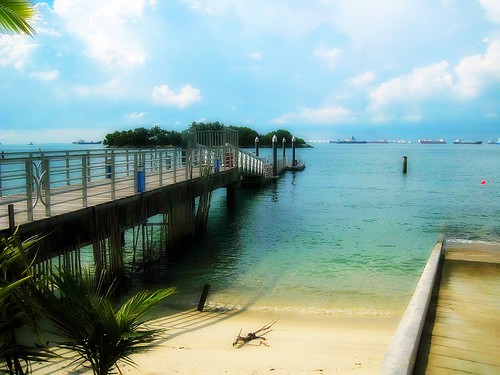
The largest shopping mall in Singapore is designed and built to bring shopping experience to the max. Vivocity is a convenient stop before or after Sentosa Island. I can understand the “largest shopping mall” concept, but I don’t see how one can find joy being smothered up in a shopping mall regardless how superb grand it is. (Read my other article about shopping in “heavenly” Singapore “Shopping in Asia Trilogy – Heavenly Singapore“)

I felt like being in Asia at last in this rural area where I had to slap on insect repellent and did my natural call on top of a hole-above-the-water. In a country where almost everything was designed, polished and branded upscale and world-class, Pulau Ubin gives you something real. You can go and pick up as many durians (Singapore’s national fruit) and coconuts as you want for free, provided that neither durians nor coconuts fell on top of your head first.
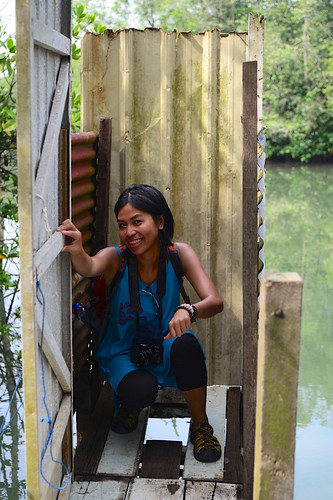
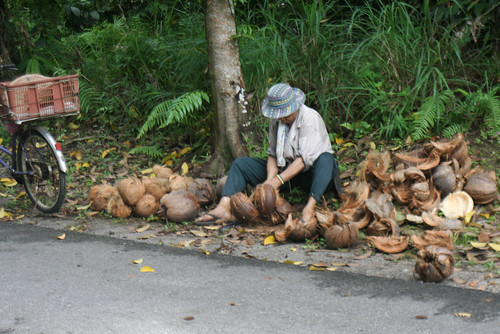
There are many of those coconuts on the roads.
Being right above the equator, Singapore is ridiculously sunny and hot. That’s why despite swearing off shopping and preferring to walk, I had to find solace in air-conditioned subways and air-blasted mega malls like this.
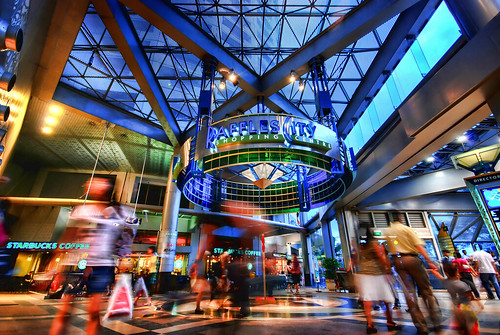
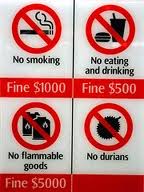
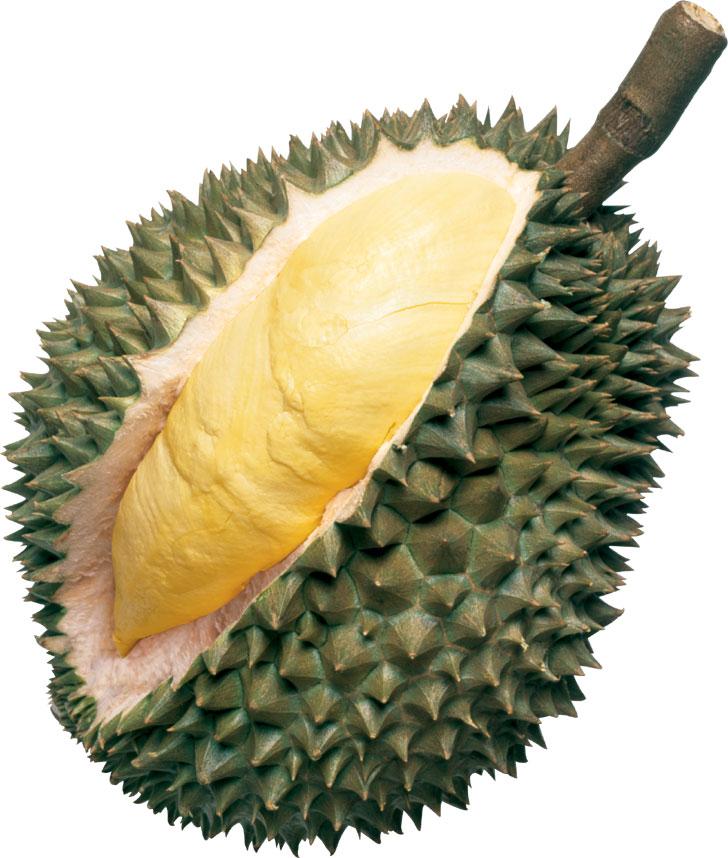
Singapore is a ‘fine’ city. Singaporeans all seem to be very relaxed and friendly, but watch out, they’re also obsessed with rules and orders. Every warning sign is followed by a fine amount including trivial ones like “Please close the door behind your,” “Keep the bath clean,” or “Do not sit on other people’s bed.”
They forbid people bringing durians into the metro. However, given many Singaporeans using the subways as their means of transportation, how do they buy durians and bring them home? Do they need to walk from the nearest market to home or rely on friends to give them a ride when they feel a durian urge? I asked, but nobody gave me an answer to this question.
Probably the majority of visitors wouldn’t be able to do this last item. I was lucky to find a host family which was as Singaporean as it could get. This family was ethnic Chinese, a middle-class working couple and two young, intelligent boys aged 5 and 9. Outside of the regular school programs, the boy had another rigorous learning program: chess lessons, music lessons (piano, violin, flute), roller-blading, and Chinese classic (reading and memorizing Confucian texts). Despite being an atheist with a Muslim background, the family sent their older son to a Catholic school, supposedly an excellent school where Singapore’s current prime minister, Lee Hsien Long, studied.
They also took me to a maid agency to look for a new maid as their current one wanted to return to Philippine. I also got to participate a graduation and visit the hospital for the older boy’s checkup.
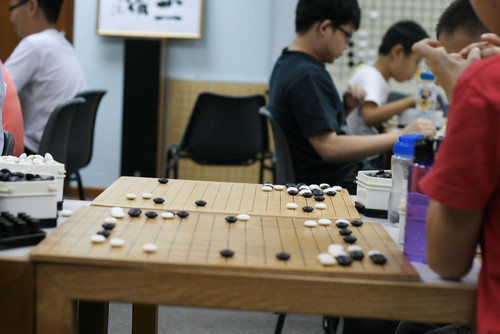
Photo Credit:
1.Renée S. via Compfight cc
2. Photos taken by Rick
5. Lucian Teo Flickr via Compfight cc
8. Vandatourism.net
9. sandragxh
12.Schristia
13.Wajahat Mahmood
14. Christoph Chan
17. William Cho
18. Andrew Griffith
5 thoughts on “Things to Do in Singapore: Traveling in a First-Class Country”
cindyPosted on 9:57 pm - Mar 13, 2013
yup rau muong is the simplest best thing for a meal. a few weeks ago, i was in sapa, wanted to grab vai bo rau muong, they’re expensive now in winter heh. didn’t know rau muong = water spinach. i got used to western food until the last couple year i kept going to sapa and ate vietnamese food, and now there’s someone selling vietnamese food in my company + my last few months traveling eating only Asian => very hard for me now to go back to pizza, cheese, toast etc.
Nguyen Nguyet ThuPosted on 2:57 pm - Mar 24, 2013
Yeah, rau mu?ng now is expensive. Sapa bán 1 bó rau mu?ng có
h?n ch?c c?ng mà giá t?i 40 kc. ? VN ch? 5-10kc/1 bó rau mu?ng. Ch? ?i, I’m
also not sure how to say rau mu?ng properly in English. When I bought rau mu?ng
in Sapa, it’s written on the wrapping as MORNING GLORY. Rau mu?ng grows in the
water and it becomes tender quickly after boiled. Probably, that’s why people
think it looks similar to spinach and call it as WATER SPINACH. Western food is
heavy for my stomach so I prefer to eat Asian food. I made tofu every week and
sometimes I make kimchi as well. Sapa is far from my place so I am not able to
buy Vietnamese foods frequently. Sometimes I make tofu, kimchi and eat them
with rice, it’s so good->my simple favourite meal (-:
CindyPosted on 3:37 pm - Mar 30, 2013
i don’t eat as much tofu as I want, will start now. really like kimchi but haven’t in CZ. tried to make it before, following a recipe i found online, but some how it turned into vietnamese salad :-). please if you know how to make it, send me your recipe. i work very close to sapa actually.
Nguyet ThuPosted on 4:55 pm - Apr 11, 2013
Sorry for the late reply. I also follow online recipes and tried to make
kimchi for the first time but it did not taste original kimchi.
Probably at that time, I used Czech chilli powder. For the second time, I
putted too much ingredient so it tasted like Vietnamese salad. But you
know that sometimes we have to train cooking as well. Anyone can train
to be a cook; we just need to practice right? So finally, I made kimchi
successful on the third time hahaha
I think they also sell
kimchi in SAPA. I saw it in TAMDA FOOD but I have not tried. Some
products have good quality but some products are really horrible. Last
time, I wanted to cook XÔI GÀ, so I bought hulled mung
bean there.
When cooked it at home, it smelled horrible. They used too much chemical
to make the hulled mung beans become more yellow. And once again I was
disappointed while making CHÈ C?M. It’s not C?M (green dried rice).
They use old rice and colour them into green chemical. You know original
C?M? It is sweet-smelling( mùi th?m ?ó ch?).
OK now I show you how I make kimchi at home.
I use 1 napa cabbage (about 1kg)
Cut the napa cabbage into chunks.
Soak them with about 100 g salt in plenty of water. Then leave this to soak for about 3-4 hours.
Ingredients for kimchi sauce:
5 tablespoon of fish sauce
5
tablespoon of chilli powder( I did not see any Korean chilli powder in
Sapa so I bought Indian extra hot chilli powder in TAMDA FOOD(the new
clean shop).I think u know it?
1 onion
1/2 oriental pear
1/2 apple
1 /2tablespoon of salt
1/4 tablespoon of sugar
small touch of ginger
3 tablespoons fish sauce
Cut onion, pear, apple, and ginger into small pieces and mix
them till fine. Then add them with fish sauce, chilli powder in to the blender
and mix them for a few seconds.
2 medium carrots (cut them into small pieces)
4 spring onions (cut them into small 4-5 cm pieces)
1-2 small chilli (cut them into small pieces)
After finish soaking the cabbage, drain all the water and rinse
the cabbage again. Put the cabbage pieces to the tray and add the kimchi sauce, carrots, spring onions, small chilli.
Please wear kitchen gloves and mix them by hand till it’s all mixed
together. Taste it. You can add more a bit salt to suit your taste. But
it should be balanced, not so salty, not so spicy and not so sweet.
Good luck! Please let me know if you make kimchi successful!
GuestPosted on 10:56 pm - Mar 12, 2013
After reading this article, I went to Sapa to buy Asian foods. It’s pity that they don’t sell rau mu?ng in Asian grocery store near where I live. Sapa is too far for me. I made rau mu?ng xào
(stir-fried water spinach) today, ahhh its so good hahaha